More fungi on the table
The Deerholme Mushroom Cookbook: From Foraging to Feasting (Revised and Updated)
by Bill Jones
Victoria: TouchWood Editions, 2024
$40 / 9781771514392
Reviewed by Trish Bowering
*
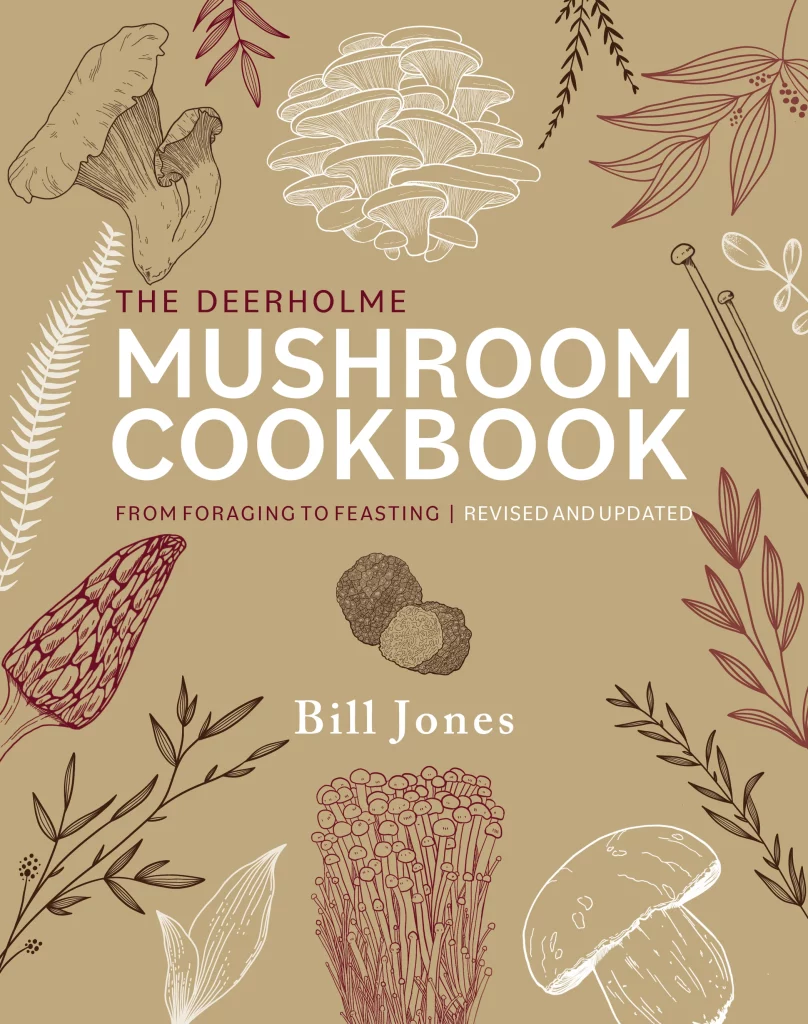
A confession to start: I didn’t like mushrooms for much of my life. I’d avoid them in every dish, fastidiously picking them out, piling them in an undignified heap on the side of my plate. If someone asked me why I didn’t like them, I couldn’t put words to it. When pressed, I’d admit that I’d probably never even tasted a mushroom.
A handful of years ago, I embarked on a project to see if I could come to tolerate mushrooms. A slow desensitisation, it was surprisingly difficult at first, but within a couple of years of eating fungi whenever they were served to me, something shifted: from initial distaste, to neutral ground, to…wait, did I now like mushrooms? I started to order mushroom dishes at restaurants, and then actually bought and cooked with them. Delicious!
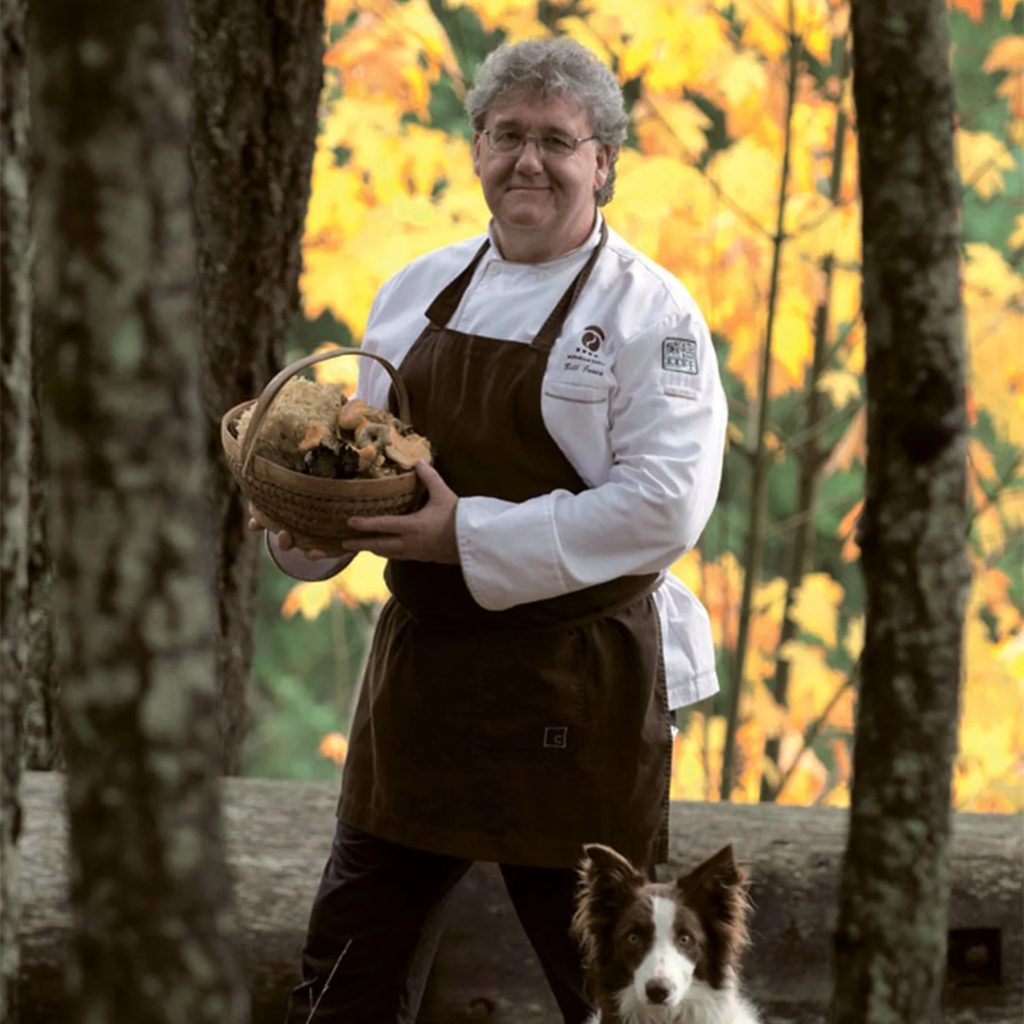
Bill Jones, an expert on wild foods, foraging, and a Michelin-trained chef, clearly shares my newfound appreciation of fungi of all sorts, as evidenced by this updated and revised edition of his 2013 collection The Deerholme Mushroom Cookbook. Based out of Deerholme Farm in the Cowichan Valley on Vancouver Island, Jones offers an informative and beautifully photographed cookbook that showcases the diversity of local mushrooms and provides inspiration for incorporating fungi into everyday cooking.
Most of our lives are spent wrapped in civilization. We are nestled in our cars, houses, offices, and landscape. Stepping outside of this comfortable zone, we find the wilderness lurking at the edges of our world. It is here that mushrooms live, waiting to feed us, kill us, heal us, or alter our perception of reality. But which ones do what? That is a really good question. Such a question started me on my journey into the world of fungi.
This book is a celebration of seasonal and local foods from the place Jones calls home. Jones includes a short but fascinating summary of the main mushroom classifications, including symbiotic fungi that benefit from their relationship with plants and trees; saprophytic mushrooms, which feed on dead and decaying materials; the ascomycetes group, which reproduce via spores in tiny sacs inside the mushroom; and parasitic mushrooms, for which, “the relationship often does not end well for the host.”
Foraging for local mushrooms is something that I’d love to try! Jones’ chapter on mushroom foraging is a primer rather than a comprehensive guide, with descriptions and pictures that piqued my interest in the possibility of future foraging. He provides a list of helpful gear to take, like a compass and survival kit, but I’d surely need an experienced forager alongside before I’d feel confident. Indeed, Jones notes, “I highly recommend you sign up for a mushroom foraging workshop or join your local mycological society…Going out with experts is a great way to get introduced to the foraging world.”
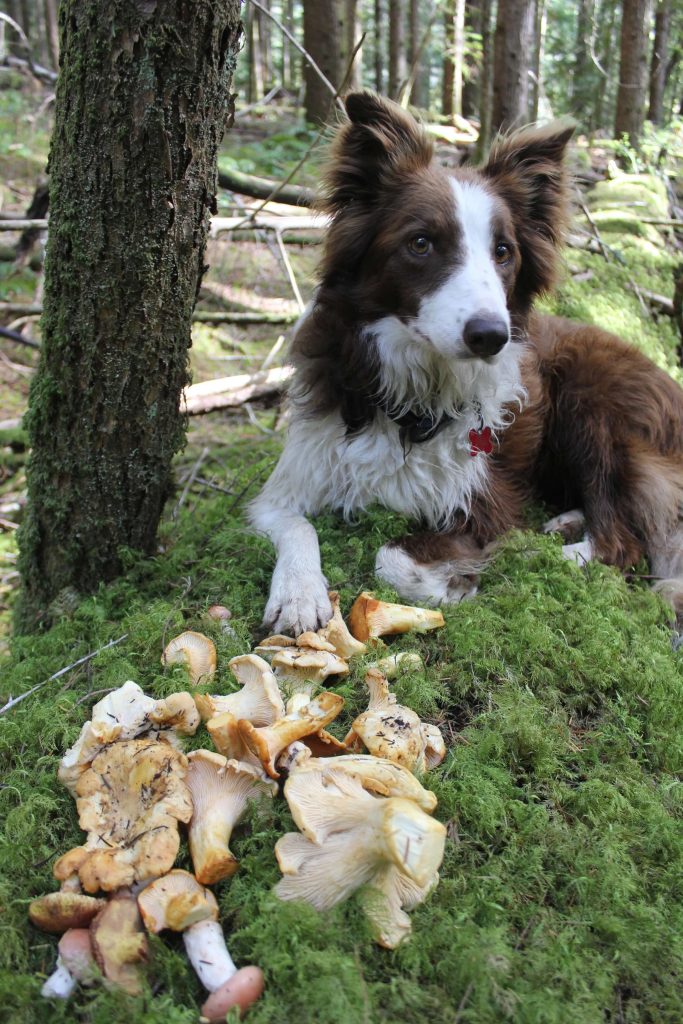
Rather than head to the forest, I foraged at the supermarket. On the hunt for some different varieties, I made a trip to my local farmer’s market, where I found a few interesting specimens. It being midwinter, there was a limited selection, so I resorted to buying some dried mushrooms. Reconstituted, they worked surprisingly well. The “Shopping for Mushrooms” chapter was particularly useful, with its lovely photos. It’s satisfying to identify common mushrooms in the local shops. “That’s a King Oyster!” I could confidently say to my spouse as I was chopping up my bounty.
The majority of this book showcases a variety of recipes. Divided into sections that include almost everything from stocks, to seafood, to desserts, this book can serve as a reference for cooking with fungi in all seasons. Jones suggests which types of mushrooms to use in each recipe, but always notes alternatives that will substitute well. “These recipes work with many types of mushrooms…the best mushrooms to cook with are the ones you have available. The results will be different, but all are interesting and enjoyable on some level.”
I chose four recipes to cook and served them as a multi-course meal.
The Recipes:
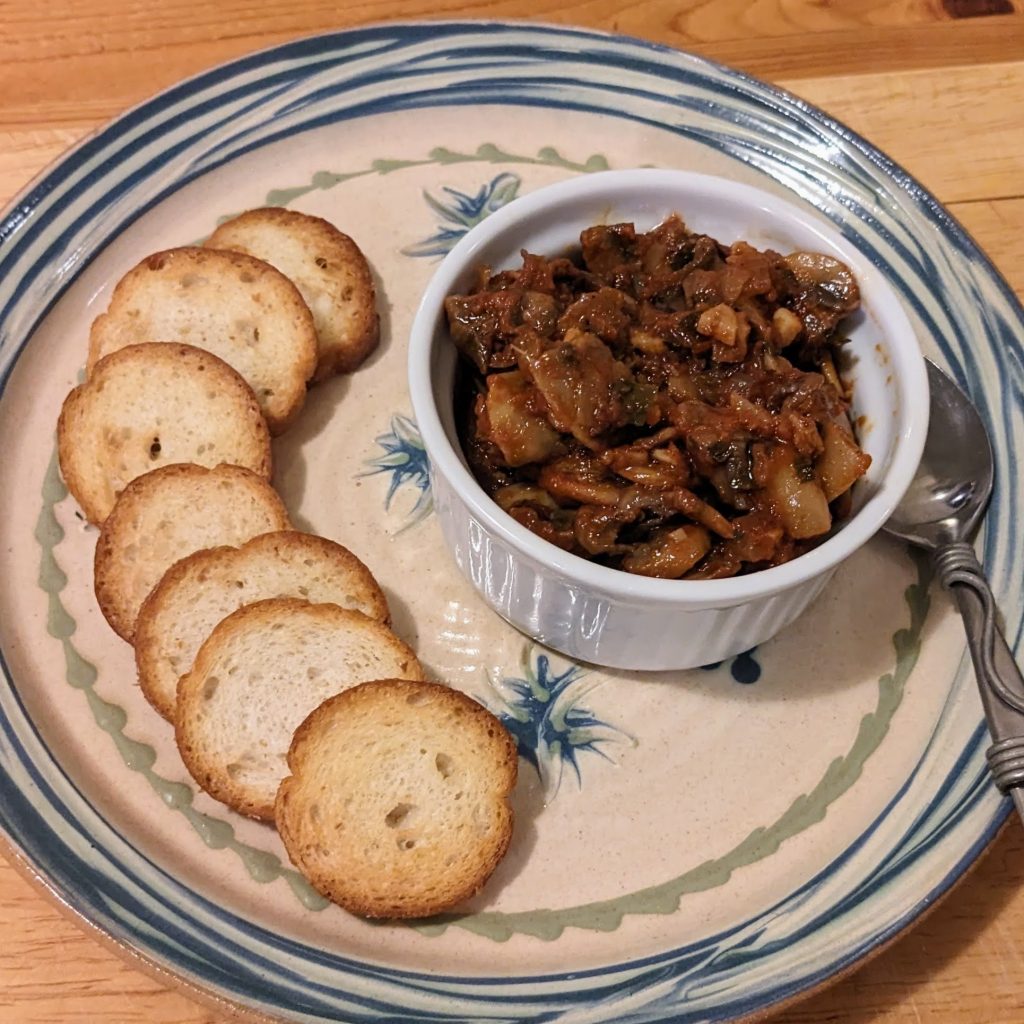
Conserva of Porcini Mushrooms, Capers, and Lemon
A conserva is a Spanish tapa of preserves in cans or jars. Jones hopes that, “This combination of fresh porcini, garlic and lemon will transport you to the tapas bars of Spain.” I substituted button mushrooms for porcinis, and the ingredients came together beautifully. The tomato sauce simmered and reduced, and I finished the dish with a generous amount of lemon juice and zest. Served on plain crackers, the sharp lemon against the umami of the mushrooms was unexpectedly delicious. Leftovers became a pasta sauce: terrific! My only confusion was that the conserva I ended up with looked nothing like its accompanying photograph, which seems to have omitted the tomatoes. They are sitting in the background of the picture, decoratively untouched.
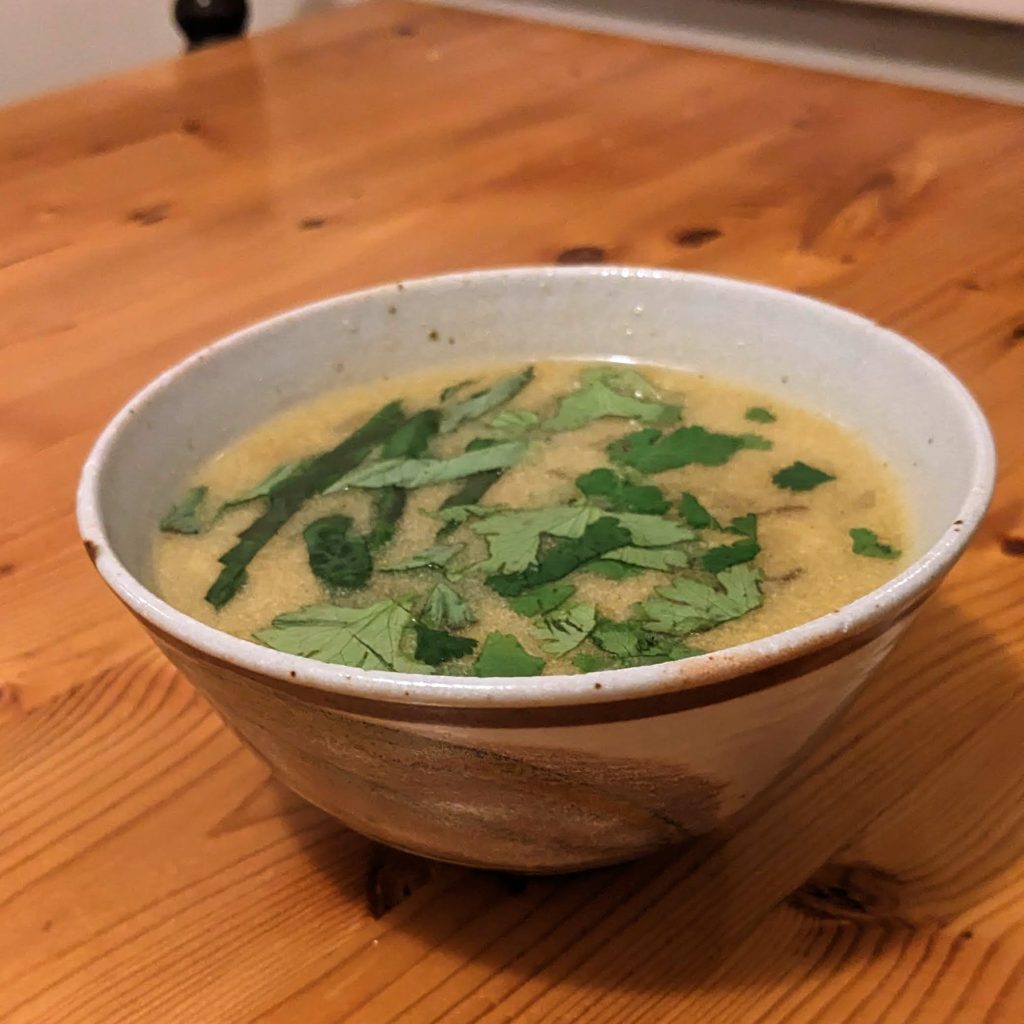
Curried Mushroom and Coconut Bisque
I love a good soup, especially in mid-winter. For our second course, I made this bisque, drawn to the recipe for the curry and lime. Though Jones suggests chanterelles, “a wide variety of wild and cultivated mushrooms will also work.” Perfect for my beautiful box of farmer’s market fungi! Using veggie stock, this soup came together with ridiculous simplicity considering the result: a sophisticated mushroom delight that allowed me to honour the mushrooms while savouring the curry, lime, and ginger notes. A keeper for sure.
Swedish Mushroom and Crab Pancakes
A crab and mushroom crepe for dinner isn’t something I’ve ever had, so I decided to challenge myself. With a touch extra flour to make the batter easy to work with, the crepes were simple to prepare. I used the gorgeous farmer’s market mushrooms for the filling. Alas, my mistake was to use poor quality canned crab; if I make these again, I will splurge for good quality crab meat. Assembled and warmed in the oven, this dish was decent, but lacked a wow factor: the mushrooms, crab and sour cream were all particularly mellow flavours. I longed for a sauce to add interest. That said, we had tons of leftovers, which I froze. Thawed, they held up beautifully as portable lunchtime wraps, and somehow tasted even better.
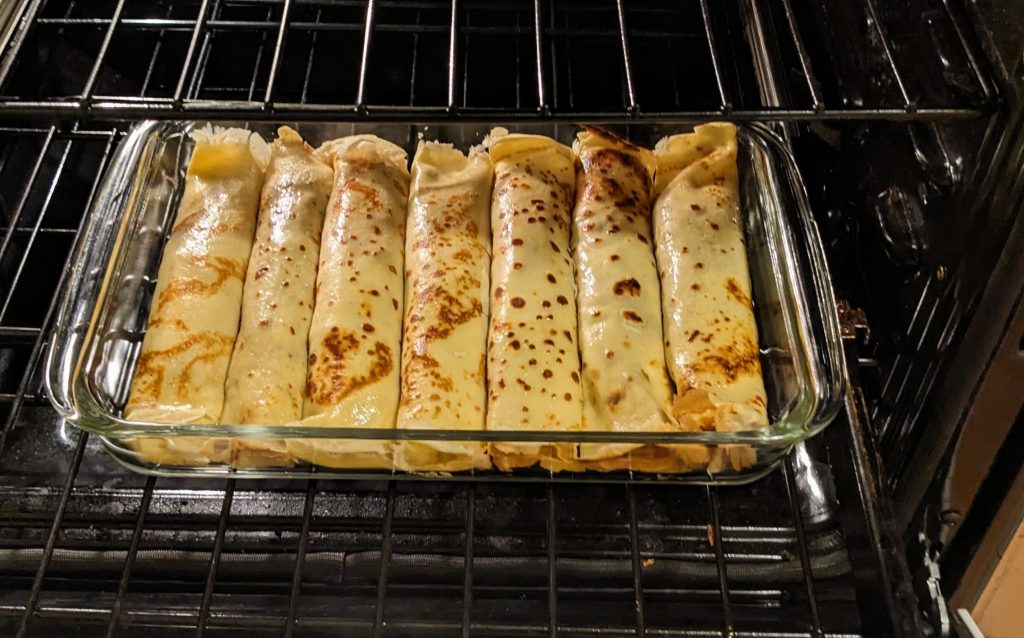
Caramelized Mushroom Ginger Upside-Down Cake
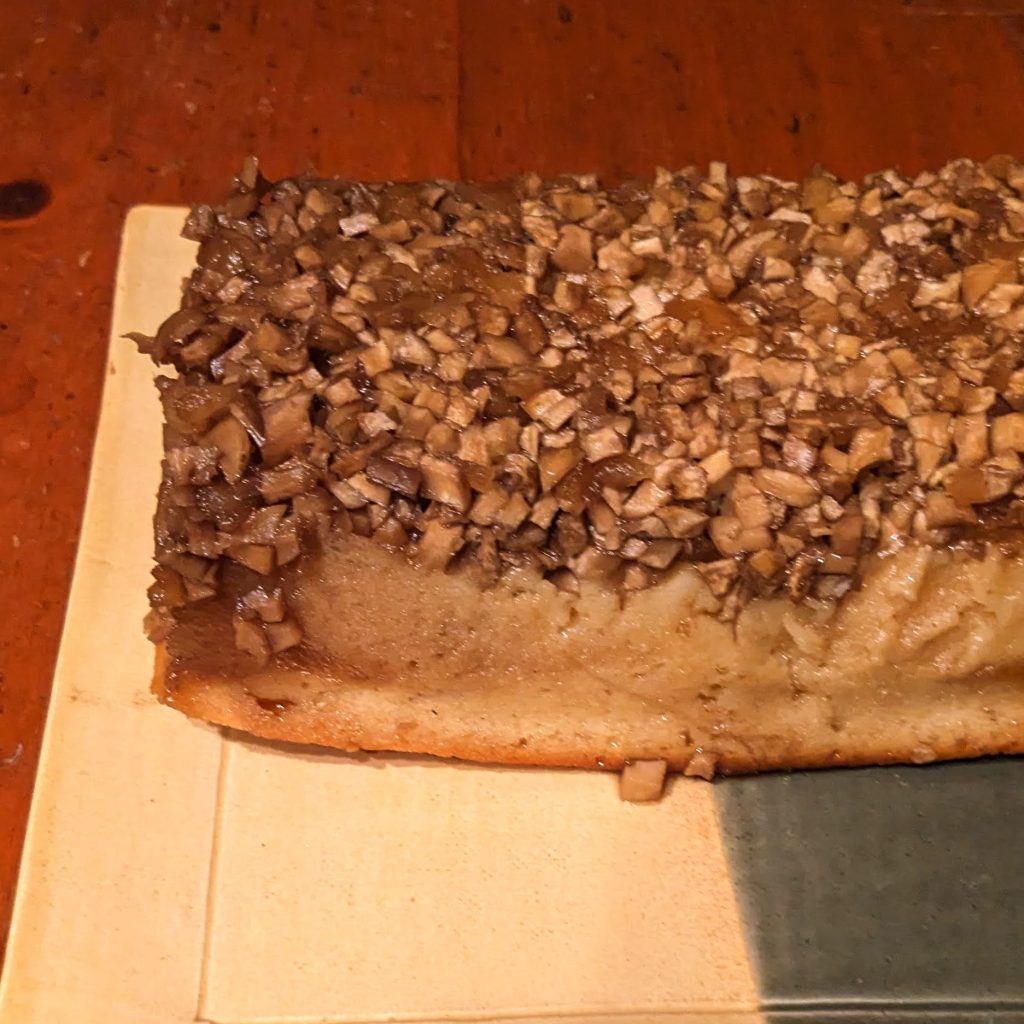
It took me a minute to wrap my head around making a mushroom-forward dessert, but I’m betting that that will be a common sentiment for the casual cook. I decided on a mushroom upside-down cake, because who doesn’t love a good upside-down cake? Dicing white button mushrooms, I mixed them with brown sugar, candied ginger, and butter. I placed a basic cake batter on top of that mixture in my loaf pan and popped it in the oven.
I rested the cake, perhaps for a bit too long, and when I turned it out, it was squelching with sugary liquid. The top of the cake was strikingly beige, not the rich caramel colour promised in the photo. Slicing into it, it held together, and it tasted…not horrible. The mushrooms no longer tasted mushroomy, as the overwhelming flavour was brown sugar and ginger. The cake resembled a steamed pudding, and wasn’t unpleasant, but I probably wouldn’t make it again.
Like the conserva, this cake didn’t match its photograph. In the photo the mushrooms are a beautiful deep brown colour and left whole, while the recipe calls for diced mushrooms.
*
My long-conflicted relationship with mushrooms has gradually crystallized into a happy discovery of the delights of this versatile and tasty class of food. “Use this book as a launching pad to propel your journey into the world of mushrooms,” Jones says, and spending time with The Deerholme Mushroom Cookbook helped me shop for fungi with more confidence, teaching me to identify the more common mushrooms, and pushing me to cook with different varieties. The recipes were generally straightforward with easily sourced ingredients, and came together as an inspiring four course meal, even if the book’s photos sometimes didn’t resemble the finished product.
I’ll keep this cookbook on my shelf as a reference as I explore more mushroom varieties. Perhaps I’ll join a foraging course to gain some confidence identifying wild mushrooms. “This book is a celebration of seasonal and local foods. In that spirit, seek out the best local food products you can find, support small farmers, or grow your own produce when possible. The planet and your immune system will thank you.”

*

Trish Bowering lives in Vancouver, where she is immersed in reading, writing, and vegetable gardening. She has an undergraduate degree in Psychology from the University of Victoria, and obtained her M.D. from UBC. Now retired from her medical practice, she focuses on her love of all things literary. She blogs at TrishTalksBooks.com and reviews on Instagram@trishtalksbooks. [Editor’s note: Trish Bowering has reviewed books by Bruno Feldeisen, Bill Jones, Christine Cosack, Andrew Boden, Mix Hart, and Steve Burgess for The British Columbia Review.]
*
The British Columbia Review
Interim Editors, 2023-26: Trevor Marc Hughes (non-fiction), Brett Josef Grubisic (fiction)
Publisher: Richard Mackie
Formerly The Ormsby Review, The British Columbia Review is an on-line book review and journal service for BC writers and readers. The Advisory Board now consists of Jean Barman, Wade Davis, Robin Fisher, Barry Gough, Hugh Johnston, Kathy Mezei, Patricia Roy, and Graeme Wynn. Provincial Government Patron (since September 2018): Creative BC. Honorary Patron: Yosef Wosk. Scholarly Patron: SFU Graduate Liberal Studies. The British Columbia Review was founded in 2016 by Richard Mackie and Alan Twigg.
“Only connect.” – E.M. Forster